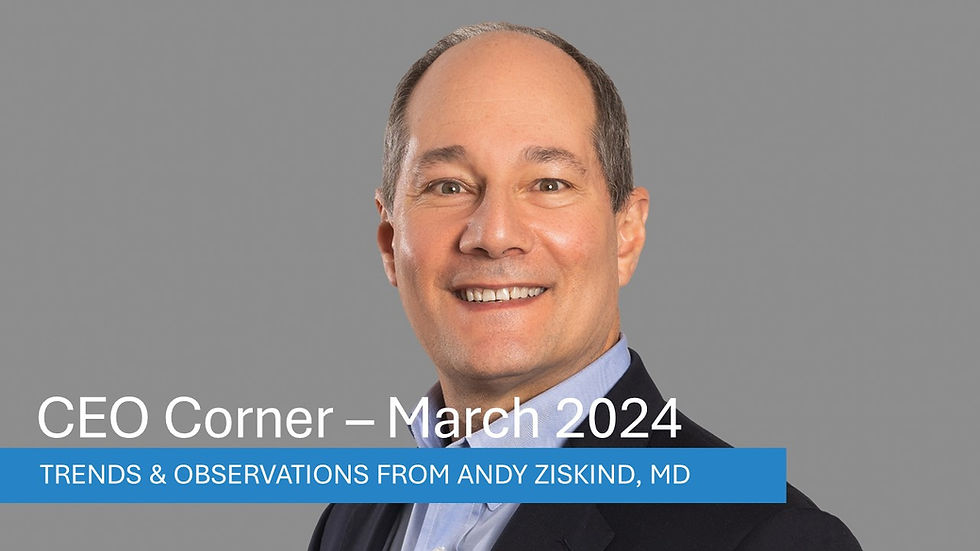Rethinking Value-Based Strategies: If We Still Believe in Population Health Management, What Should You Be Thinking About?
- Andy Ziskind, MD
- Oct 29, 2024
- 2 min read
Updated: Feb 25, 2025

Enthusiasm for value-based contracting has waned due to failures to achieve financial results. Either total cost of care and clinical goals fall short, or goals are achieved, but shared savings don’t come close to matching lost revenue. Retroactive changes in CMMI benchmarks, administrative challenges with delegated MA risk, and lack of scale also create headwinds; and of course, the post-COVID focus on operating margin has led to a disproportionate focus on traditional margin-producing activities such as commercial inpatient volume.
All that said, CMS strives to have 100% of Medicare beneficiaries and most Medicaid beneficiaries in accountable care relationships by 2030. The aging population and the growing diversity in patient demographics make redesigning healthcare around population health the right thing to do—not just for clinical outcomes, but also in meeting the evolving expectations of today’s healthcare consumers. As patients increasingly expect care that is convenient, transparent, and personalized, health systems must incorporate these consumer-driven elements into their population health strategies.
So, what have we learned to date:
Shared savings programs disproportionately benefit those organizations working in regions with high utilization where there’s lots of cream at the top!
Most providers overdesign their infrastructure and overestimate their ability to deliver successful results.
Most providers do separate contracting from operations. However, the contracting team must be aware of execution capabilities and the operational team needs to sleep with the contract under their pillow!
Rather than strive to execute on dozens of “important” initiatives, keep in mind that the greatest benefits accrue from a small number of high-impact initiatives:
Narrow post-acute network management
Complex case management
Palliative and end-of-life initiatives
Management of high-cost drugs
It doesn’t take a lot of fee-for-service payer mix to keep clinicians maintaining a fee-for-service mentality. Maintaining risk patient density per provider is important.
Scale matters. Providers with subscale insurance plans should consider collaborating with other providers, payer partnerships, or divesting.
Market dynamics are changing. We don’t believe you can just walk away from risk. Payers are increasingly asking that providers accept value-based payments instead of unit cost increases. We strongly believe that you need to counter with a contracting strategy that includes fixed unit cost increases as an essential foundation for performance-based increases. As payers, such as UHG/Optum, increasingly own more of the vertical healthcare spend, as retail finds its way, and disruptive innovators acquire profitable ancillaries, it’s essential that health systems execute on strategies to expand attributed lives.
As a next step, you should be thinking about:
New contracting strategies
Focusing on population health management operational effectiveness
Achieving effective scale
Again, a primary care attributed lives strategy is essential through a combination of direct physician employment and tight clinically integrated network development/expansion.
There is no one-size-fits-all solution, as each market varies in clinical culture, baseline utilization patterns, degree of risk and degree of pay and provider competition.
Keep in mind that predictive analytics and AI will significantly improve the ability to focus the right resources on the right patients/members.
Adapting care models to reflect the growing consumer influence on healthcare choices, focusing on convenience, personalization, and transparency
In summary, population health management is the right thing to be doing… but let’s do it right!
Best regards,

Andy Ziskind, M.D.
Managing Director and CEO

Comments